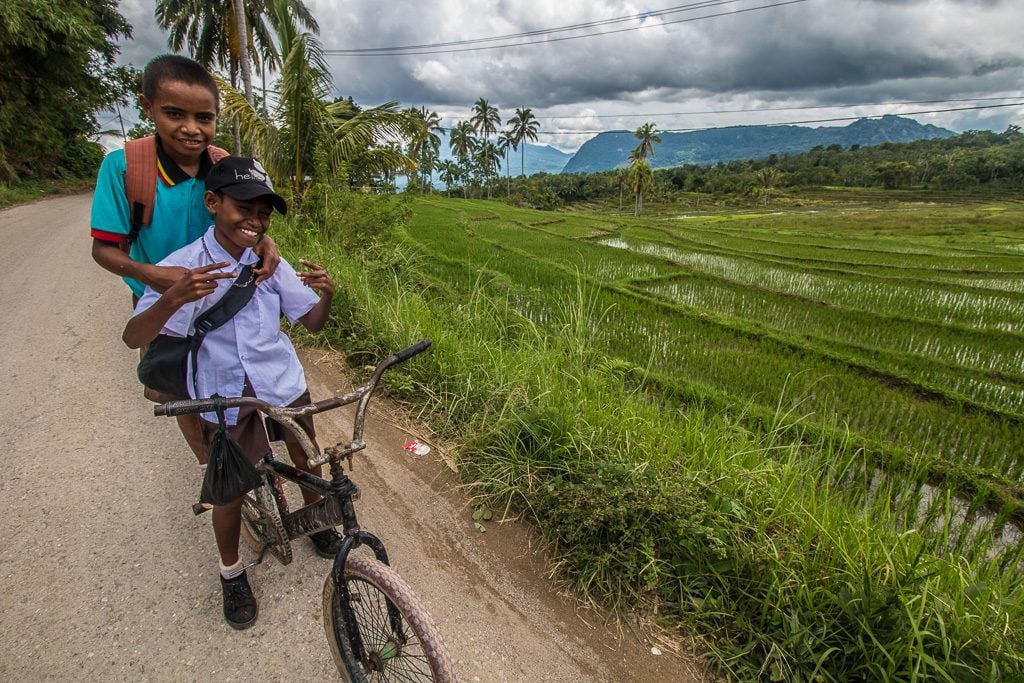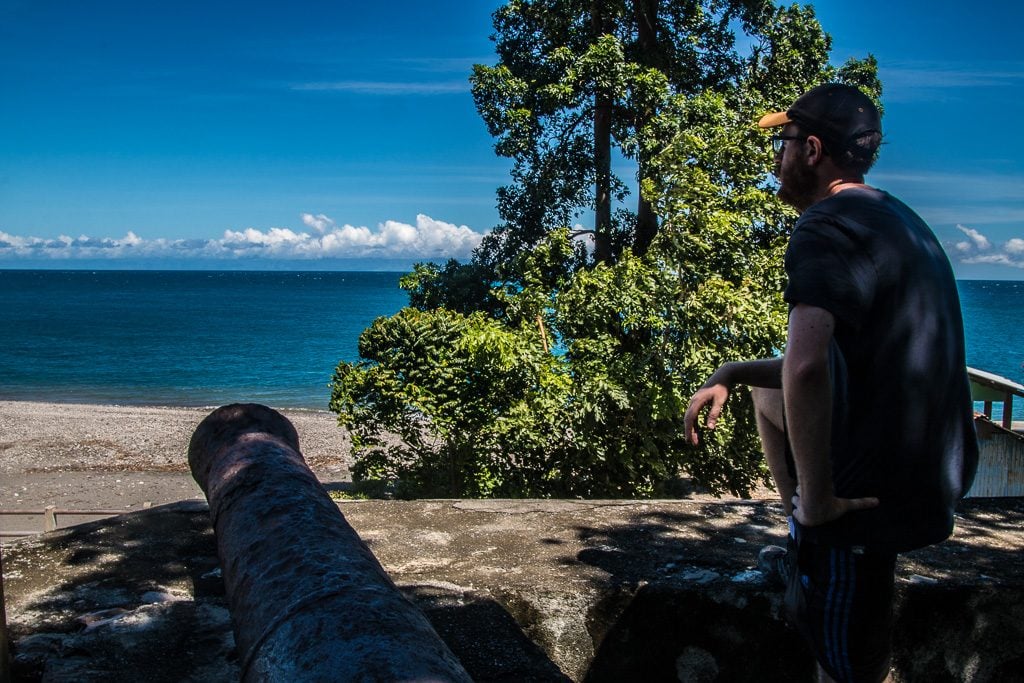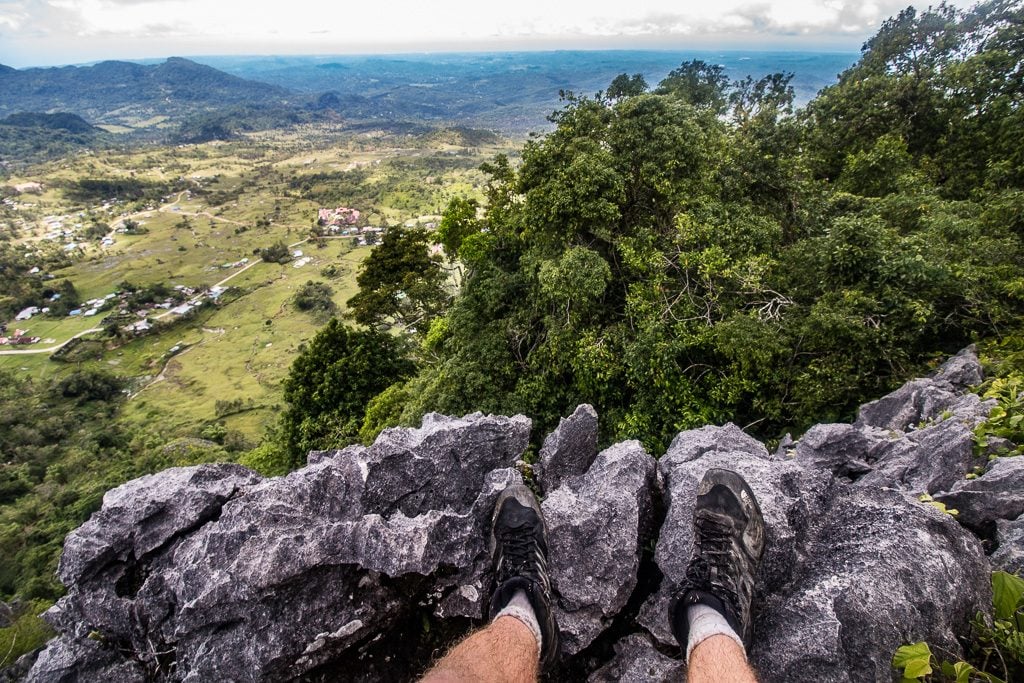A Complete East Timor Tourism Guide
The small country of East Timor (also known officially as Timor-Leste) is one of the least visited countries in the world.
This tiny nation occupies just half of the divided island of Timor, and due to its troubled history and poor infrastructure, the country sees some of the lowest tourism numbers in the region. The East Timor tourism industry is hardly an industry that has flourished, but for adventurous travellers, there are a real wealth of adventures waiting on the island.
I spent several weeks exploring East Timor, after travelling overland from West Timor in Indonesia. Despite the challenges involved in travelling, the poor state of public transport and the lack of general information, I had one of the best experiences of my travel career in East Timor.
I would recommend that anyone looking for an off the beaten track destination in Asia should visit, and to help you out, I put together this guide on tourism in East Timor, to hopefully inspire others to follow in my footsteps.
A Brief History of East Timor
East Timor’s turbulent history has left the country today in an unfortunately underdeveloped state. There’s no hiding the fact that this a poor country, and there’s no hiding the fact that this is a country that has suffered. For almost 500 years East Timor was a Portuguese colony, and the colonisers left a lasting legacy that is keenly felt today in the politics, language and culture of the now independent nation.
Colonisation left the island of Timor divided between the Portuguese in the east and the Dutch in the west. When Indonesia gained independence, West Timor became part of this new nation. East Timor, however, remained under Portuguese rule until 1975 when after a coup occurred in Portugal, the East Timorese declared their own independence.
This was short-lived, however, as soon enough Indonesian soldiers were crossing the border and parachuting into the capital, Dili. East Timor would remain under occupation until a popular referendum in 1999 led to the withdrawal of troops. It wasn’t until 2002 though, that an official agreement created the new nation of East Timor (Timor-Leste).
When the Indonesian army left, they also left a trail of destruction across the country. East Timor was left with little infrastructure and a long rebuilding process, a process which is very much still in progress to this day. Due to the violence, the trouble and the negative history, tourism has never really kicked off in East Timor, but if the country remains stable, continues to improve its infrastructure and perhaps markets itself to the world more, tourism in East Timor could well be a very viable industry for many locals and many more visitors could enjoy the currently unknown beauty of the country.
What is There to do in East Timor?
For such a small nation, there are a surprising number of things to do in East Timor. The country is really one of the last frontiers for travellers left in Southeast Asia and the coastline, the beaches, the mountains and the landscapes are quite simply untouched.
There are tropical islands such as the deserted Jaco Island in the far east, some of the most biodiverse waters in the world are found in the pristine coral reefs that surround Atauro Island, and the mountainous interior, although difficult to travel around, is full of uncharted hiking opportunities.
I spent three weeks exploring, starting from my base in Dili, before heading east along the coast, past Baucau, the mountains of Lohuino, through Los Palos and onto Jaco Island.
What is the best time of year to visit East Timor?
East Timor experiences very extreme wet and dry seasons. The wet season generally runs from December to April and can result in road closures and disruption to ferries and transport. It’s not impossible to travel around if you have patience in the wet season, but it will take longer. The dry season runs from April through to November and is a wonderful time to visit. If you plan on snorkelling or diving, then try to visit at the end of the dry season, when the water is at its clearest.
How long do I Need to travel to East Timor?
From one end of East Timor in the west to the furthest point in the east is a distance of only around 340 kilometres. This is not a large country, but it does take time to traverse given the poor roads and the general lack of travel information.
Many travellers simply fly into and out of Dili, spending just a few days to either qualify for a new Indonesian visa when they head back to Bali or to tick off the country. I’d recommend a few days in the capital – 3 days is perfect to see all there is in Dili – but then I would highly recommend exploring the rest of the country too.
Atauro Island, a two-hour ferry ride from Dili, should be on the list. You can spend a further 2 or 3 days here, depending on the ferry timetable. To travel to Jaco Island in the far east, you need to allow at least one week given the terrible roads. If you have two weeks, then you can comfortably enjoy a full and enjoyable itinerary in East Timor.
Visas for East Timor
East Timor has been notorious in recent years for the unfortunate lack of information regarding its visa system. Things have changed for the better now, and if you fly into and out Dili and hold a Western passport then you can be issued a visa on arrival for 30 USD. This is single entry and is valid for 30 days.
Crossing the land border, however, has proven more complicated for travellers. While most nationalities can now receive a visa on arrival at the land borders with Indonesia, some nationalities have to also secure a letter of authorization in advance from the embassy in Kupang, allowing them to cross. This was the case for British and US passport holders in March 2018 when I travelled here. It officially took three days to secure the letter from the embassy in Kupang, however, after talking nicely to them they issued it within 24 hours to avoid the weekend wait. I then took the letter to the border and was allowed to cross after buying a visa on arrival from the immigration officers. Yes, an overly complicated and unclear system, unfortunately.
This situation always seems to be in flux though, so allow extra time if you are travelling overland, and check at the consulate in Kupang for any extra documentation you might need.
How to Travel to East Timor
East Timor has very limited transport links, which is one of the reasons why tourism has yet to really become a thing here. The country’s international airport is located just a few kilometres outside of Dili, but it has few routes on offer. The most popular is the regular – several times a day – route to Bali, the new route across to Kupang which may already be cancelled after only a few months of operation, and flights to Darwin in Australia’s Northern Territory. By far the easiest way is to travel through Bali.
From Kupang, you can also cross the land border. There are daily buses which run the route all the way to Dili, a journey of at least 12 hours. You can also break the journey up and stop off along the way of course.
Transport in East Timor
Transport is the biggest hindrance to quick and efficient travel across the country. There are bus routes between major towns, however, there are no schedules. Buses are prone to breakdowns, roads are shoddy and it can be difficult finding where buses even depart from!
From Dili, there are buses leaving from the eastern terminal further afield but just head here early in the morning to secure a spot. A journey of 120 kilometres can take 9 hours. Don’t let this deter you, but you do need an adventurous spirit. Trying to get to remote villages or points of interest can be trickier, and you may simply have to hitchhike and be prepared to rough it.
I rented a motorcycle for 17 USD per day, to traverse the rough roads to Jaco Island. The road was at times dangerous and it was slow going. If you aren’t confident driving yourself, consider paying the cost to hire a driver and a four by four, particularly if you are short on time.
Accommodation in East Timor
East Timor is hardly set up for conventional tourism. In Dili, you can find a few modern hotels – although they are expensive – and a growing number of backpackers haunts.
The hostels are the best places to source information for further travel, from the staff or from other travellers passing through. Outside of Dili, you are generally limited to guesthouses and homestays, and it may not always be clear where these are, unfortunately.
Click here for an awesome 10% discount on your hotel with Booking.com!
The Cost of Travelling in East Timor
Compared to neighbouring Indonesia, East Timor is by no means cheap to travel to. Basic expenses can be low. Local food is cheap, costing only 1-2 USD for a huge dish, and local transport on buses is exceptionally cheap. It is everything else that costs money.
A lot of this is down to the strange false economy created by the large number of UN and NGO agencies working in the country, who had an almost unlimited budget during the reconstruction period. Hotels cost a fortune compared to Indonesia, as does anything remotely Western. The cheapest backpacker dorm will be 10 USD, and there will likely be no hot water, no wifi and limited facilities. In Bali, 10 USD would get you swimming pools, a bar, hot tubs etc. It is still not expensive of course, but it is poor value in comparison to other destinations, yet another reason tourism has yet to become big here.
In Dili, you will find plenty of ATMs, especially in the main shopping mall and some of the large hotels. These dispense US Dollars as this is the currency in use. Local coins are in circulation too. This is the Centavo, and 100 Centavos is 1 USD. This is essentially small change.
******* Update: 20 October 2018. I was informed by a resident in Dili that the ANZ ATMs in the city have now been removed, as ANZ have pulled their company from East Timor. This means that there are now no Mastercard ATMs in the city, only Visa. ************
Outside of Dili, be sure to have plenty of small notes and enough cash for your trip. You can expect to pay at least 20 USD per night for a guesthouse in the rural areas. Usually, this includes dinner and breakfast too.
WiFi in East Timor
WiFi is almost non-existent in East Timor. Even in Dili, few hotels have access to consistent internet. Some of the western style chain cafes and restaurants, such as Gloria Jeans Coffee or Burger King has limited WiFi available if you purchase something. The best option is to buy a local sim card and use the data to hotspot your laptop if you need it.
What Languages Do They Speak in East Timor?
East Timor’s two official languages are Portuguese and Tetum. In practice, outside of Dili very few people actually speak Portuguese. The elder generation is more likely to speak Portuguese these days than the younger, but the local Tetum language does contain a sizeable number of loan words from Portuguese. Indonesian is much more widely understood because everyone has access to Indonesian television. English is becoming increasingly well spoken, particularly in Dili.
Safety in East Timor
I never felt under threat in East Timor, but I have heard reports on government websites stating how Dili can become lawless. Personally, I felt the biggest danger was from the terrible state of the roads. If you travel, be careful.
The other threat which is real is from crocodiles. You will see signs along many beaches, and it is not wise to go swimming if you see no one else in the water. There is a huge density of crocodiles in East Timor and they are woven into local legends and culture. Locals will tell you that only bad people are ever taken by crocodiles, I wouldn’t hang around in the water to see if you are good or bad though if it’s not a safe area.
All Photos and Words by Richard Collett
Click here for an awesome 10% discount on your hotel with Booking.com!











Recent Comments